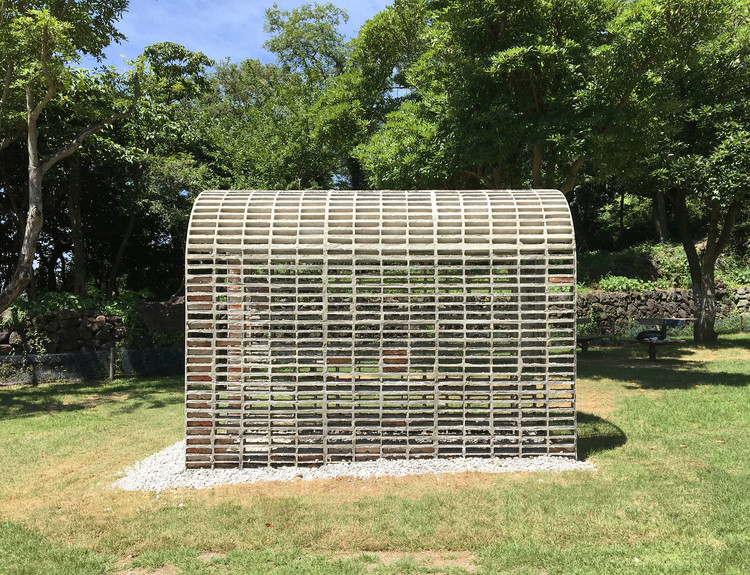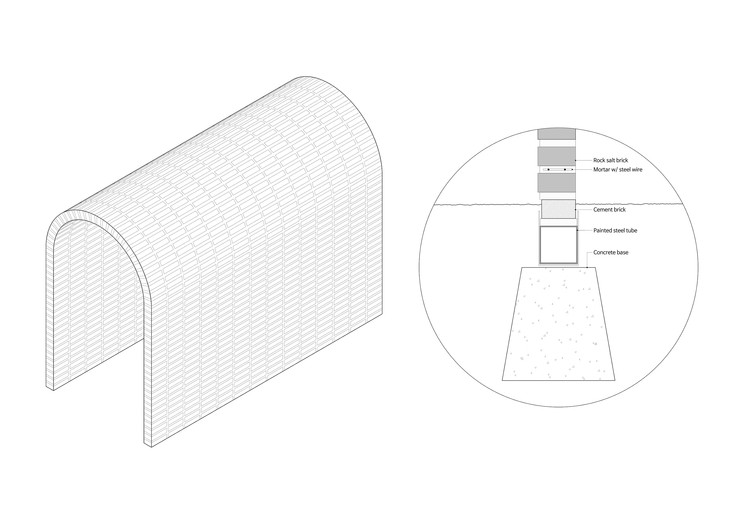
Sometimes known as the “Island of the Gods,” Jeju Island in South Korea is characterized by its volcanic rock, stunning waterfalls, and warm, tropical climate. Here, life is integrated with nature and the architecture is in harmony with the landscape. Dissolving Arch, a weather-specific installation by stpmj, responds to the island’s tropical environment. The structure began life as a solid brick vault, which then slowly dissolved in the hot and rainy periods of Jeju to produce a light, porous skeleton made of the remaining mortar which connects people with nature.

The project concept stems from the designers' curiosity about the materiality of brick and structure. The installation was primarily constructed of rock-salt units, a material which has two defining qualities: translucency and solubility. Each rock-salt brick measured 200 x 100 x 50 millimeters, and the construction was completed using a cement mortar. To construct the installation, each rock salt brick was scored on one side to ensure its adhesion to the mortar, while the cement was reinforced with steel wires. In Dissolving Arch’s initial state, rock-salt bricks enclosed the arch creating a dense, solid object. Although blocked off from the exterior, the space was brightened by wisps of light filtering through the rose-colored units.


During the three month exhibition period, Jeju’s rain and humidity dissolved the rock-salt bricks, leaving behind only the mortar skeleton. As the structure began to let in more light and create a connection with nature, the experience within the space gradually transformed.


stmpj’s ambition was to create a dialog in which a solid, dense object, blocked off from its surroundings can transform into a light, illuminated structure that connects people with nature. Unlike traditional clay brick, rock salt does not absorb the moisture of mortar and create a rough, frictional surface—the remaining structure is smooth. The final state of Dissolving Arch is one which allows light to penetrate in and blurs the barrier between inside and outside.


Architect: stpmj
Project Team: Seung Teak Lee, Mi Jung Lim, Seung Yeon Han
Location: Osulloc Tea Museum, Seoguipo, Jeju Island, Korea
Program: Temporary Installation
Area: 3.6 sm (1.2m x 3.0m x 2.4m)
Structural Engineering: Centum Engineering
Construction: stpmj
Client: Amorepacific Museum of Art
Completed Year: June 2017
Photograph: EH(Kyoungtae Kim) + stpmj
This article was originally published on 14 October 2017.

























